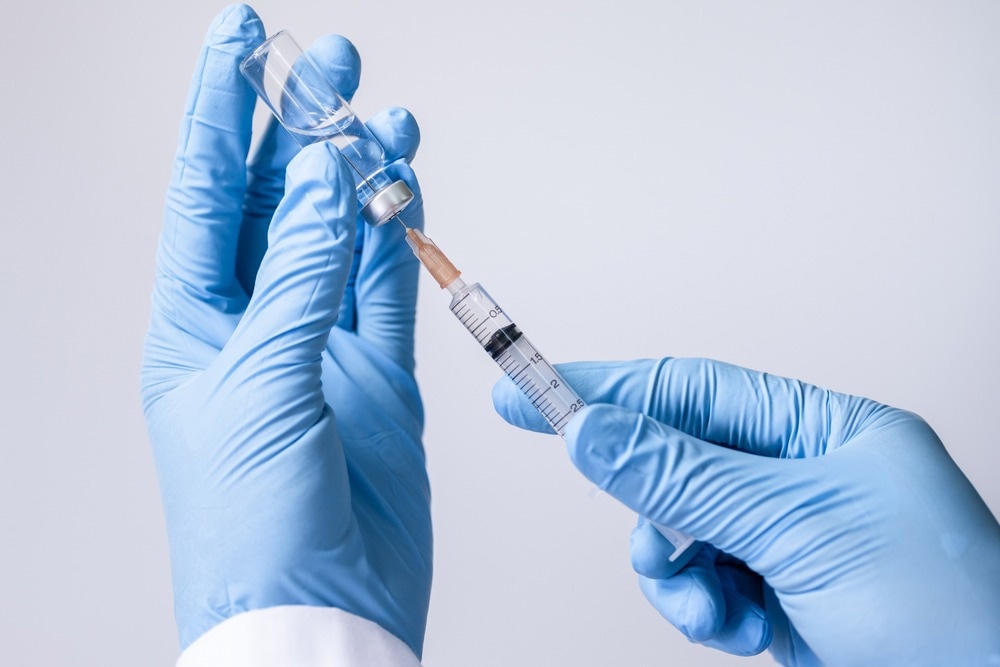15 August, 2022 | 01:49 AM
https://www.dailynews.express/posts/superior-protection-with-mix-and-match-covid-19-booster-strategy
Superior protection with 'mix-and-match' COVID-19 booster strategy

The coronavirus disease 2019 (COVID-19) pandemic was caused by the sudden global outbreak of the severe acute respiratory syndrome coronavirus 2 (SARS-CoV-2). Since SARS-CoV-2 emerged at the end of 2019, scientists have worked relentlessly to develop several vaccines to reduce the transmission of SARS-CoV-2 and protect individuals from severe COVID-19. Recently, a rapid decline in the level of antibodies elicited by vaccination with messenger ribonucleic acid (mRNA) vaccines has been observed. In a new Jama Network Open study, researchers discuss the durability and immunogenicity of homologous and heterologous booster regimens with the Johnson & Johnson Ad26.COV2.S and Pfizer-BioNTech BNT162b2 vaccines. Study: Durability of Heterologous and Homologous COVID-19 Vaccine Boosts. Image Credit: PhotobyTawat / Shutterstock.com Outstanding short-term immunogenicity and protective efficacy have been associated with mRNA COVID-19 vaccines. However, between three to six months after primary vaccination, neutralizing antibody (nAb) responses decline. A similar decline in nAb levels has been observed after the third and fourth mRNA booster doses that were offered to provide protection against the highly mutated Omicron variant. As compared to mRNA vaccines, lower initial nAb titers are induced by the Johnson & Johnson adenovirus vector-based COVID-19 Ad26.COV2.S vaccine. However, these responses were maintained for at least eight months. Previous research has shown that CD8+ T-cell responses may contribute to protection against severe disease and are more durable than serum nAb titers. T-cell responses are significantly crossreactive against the Omicron variant, despite the ability of this variant to evade nAbs elicited by vaccination. Optimal boosting strategies are the subject of active research, the results of which will be instrumental for long-term pandemic control. The primary aim of this study was to analyze the durability and immunogenicity of homologous and heterologous vaccine booster strategies. This study was conducted at a clinical site in Boston, Massachusetts. Taken together, 68 study participants who received two doses of the BNT162b2 vaccine and were boosted with either the BNT162b2 or Ad26.COV2.S vaccines at least six months after completing their primary vaccination were included in the current study. Individuals with a history of SARS-CoV-2 infection, as well as receipt of other COVID-19 vaccines or immunosuppressive medications, were excluded from the study. Furthermore, individuals were not allowed to participate if they had a confirmed breakthrough SARS-CoV-2 infection or positive nucleocapsid serology as detected by an electrochemiluminescence assay (ECLA). Study participants were enrolled between August 12, 2021, and October 25, 2021, with an additional four months of follow-up after the study period ended. Data analysis to evaluate humoral and cellular immune responses was performed between November 2021 and February 2022. Homologous boosting generated a rapid increase of Omicron nAbs, which peaked in the second week and subsequently declined by almost seven-fold by the 16 th week. Comparatively, heterologous-boosted nAbs peaked in the fourth week and declined by about two-fold by the 16 th week. These results are consistent with other findings describing the durability of immune responses following initial mRNA vaccination with a booster dose of the Ad26.COV2.S vaccine. The heterologous booster dose was also associated with higher Omicron-specific CD8+ T-cell responses. This response remains highly cross-reactive against the Omicron variant, despite the ability of this variant to evade nAbs elicited by vaccination. In South Africa, BNT162b2 and Ad26.COV2.S vaccines provided 70% and 85% efficacy, respectively, against hospitalization with the Omicron variant in the absence of nAbs. This observation suggests the crucial role of other immune responses in rendering protection against severe COVID-19. A key limitation of the current study relates to its small size at a single site in Boston. Additionally, there was a lack of randomization, and females were over-represented. Thus, future research using larger and more representative sample sizes is needed. Furthermore, follow-up times beyond 16 weeks are required to assess long-term durability. Taken together, heterologous and homologous booster vaccination generated Omicron-specific antibody and T-cell responses in mRNA-vaccinated individuals. Notably, heterologous vaccination elicited higher nAb and CD8+ T-cell responses. These observations suggest the benefits of heterologous vaccine regimens.





